The Internet is being brought to you mostly by the cables that have been laid down on the seafloor. These cables are responsible for transmitting about 99% of the international data, thus making it possible to have transoceanic communication within milliseconds and also doubles up as a loose proxy for the international trade, connecting complicated economies.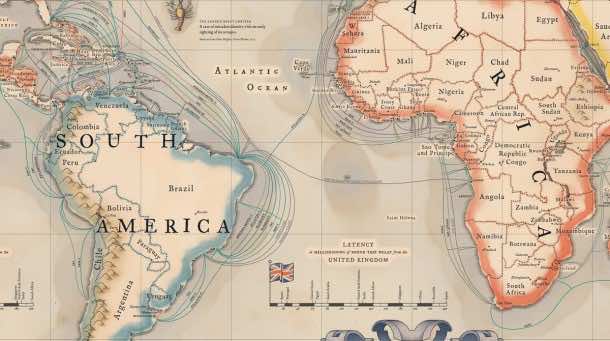
The importance of these cables and their growth has led Telegeography to create this vintage looking map of cables that make Internet possible. It contains the 299 cables that are currently active, under construction and the ones that will be funded by the end of this year. You also have access to particular information pertaining to these cables, for instance; you can find ‘latency’ at the map’s bottom (the time it takes for the transmission of information) and ‘lit capacity’ can be found in the corners (the amount of traffic a system can send, measured in TBs).
In comparison with the satellite transmission, the cables are widely used owing to the fact that they are fast and reliable while offering high speeds along with backup routes and seldom fail. They have become an integral part of the global economy and how the world connects. Check out the following map which shows the 1912 map of trade routes. The economic interdependence has persisted, however, the methods and ascribed meanings have differed. The submarine cable map also shows the economic connections that exist in less-developed countries.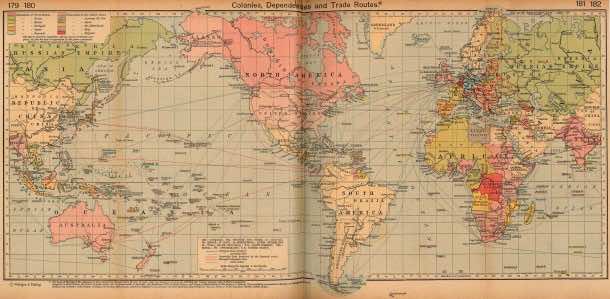
We are in no way implying that the Internet is an alternative for physical transportation of goods. The huge amounts of shipping containers, absurdly huge, also states the same. Back then and even now, the paths across the ocean required investments and willingness to take risks. We had sailors back then who took the risk and nowadays it’s the big tech companies that are taking the risk.
Google has invested $300 million in a trans-Pacific cable system consortium while Facebook has invested in an Asian cable system consortium whereas the finance industry is investing a lot in order to reduce the milliseconds it takes to process trade orders. The submarines are about 150 years old and still hold quite a potential.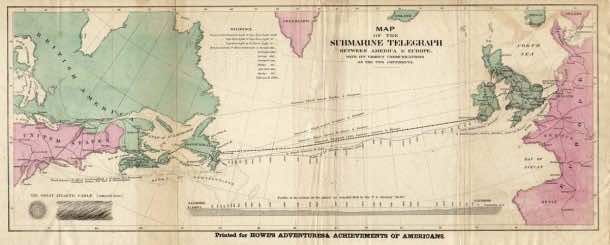
The process of laying these cables hasn’t really changed a lot in these 150 years. A ship traversing the ocean unspools the cable slowly and it sinks down to the ocean floor. The SS Great Easter was the ship that laid down the first continually successful trans-Atlantic cable in 1866 that was used for the transportation of telegraphs.
The modern cables have been thinned to a surprising level, considering how deep they are required to sink and how lengthy they are. Each cable is about 3 inches across and as expected, are thicker in shallow areas. In such areas, they are usually buried to ensure protection against fishing boats and other objects.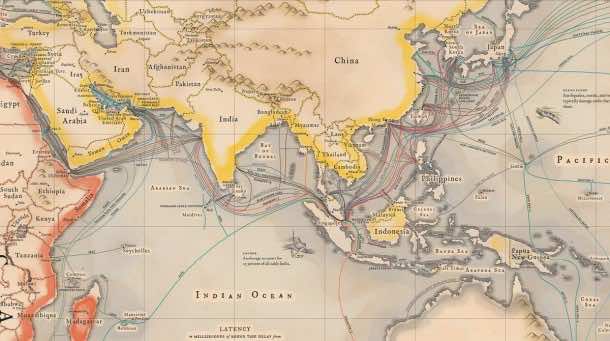
The optical fiber, the backbone technology of this system, is held within a larger shell of the cable.
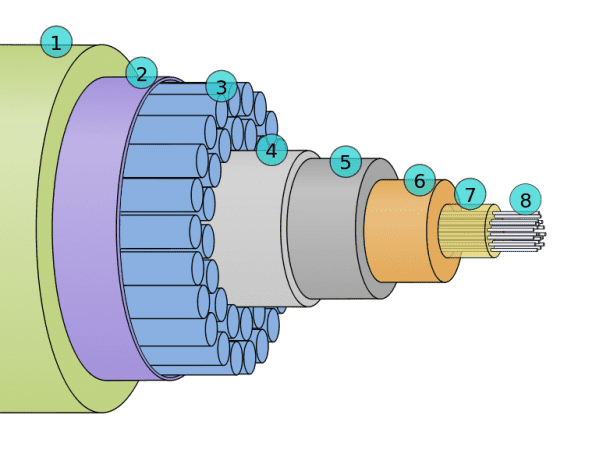 The components include;
The components include;
- Polyethylene
- Mylar tape
- Stranded metal (steel) wires
- Aluminum water barrier
- Polycarbonate
- Copper or aluminum tube
- Petroleum jelly (this helps protect the cables from the water)
- Optical fibers
These cables are responsible for the trades, GIFs, videos and articles that bring the internet around the world within a few milliseconds. This is the advantage that any trader – analog or digital – relies on and appreciates.



india mi centri
So cool..